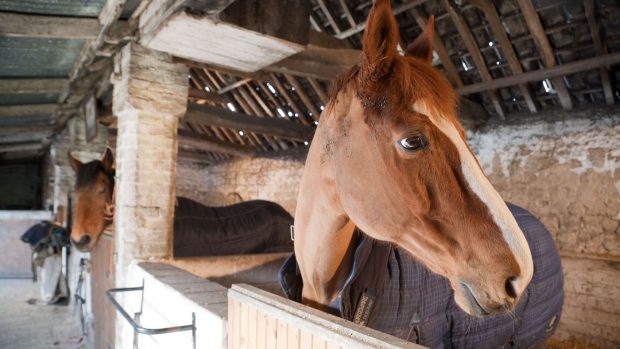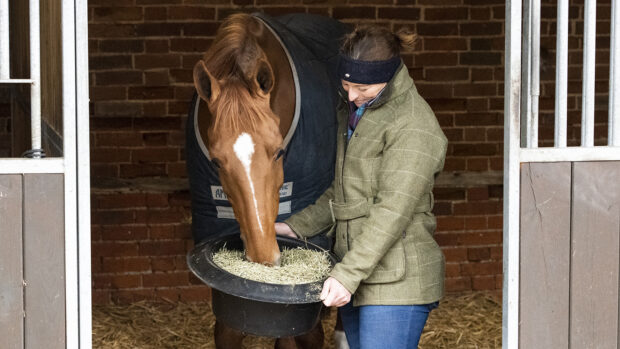Have you ever had a horse who became increasingly fractious throughout the season, struggled to hold condition and never had a shining coat, no matter how much effort you put in? He may well have been affected by the ongoing pain of gastric ulcers.
These ulcers are not thought to be new but advances in diagnosis, through video endoscopes, have highlighted their existence.
It is now commonly accepted that the “at-risk” horses are those in training – the incidence of gastric ulcers in racing is reported at 80-90% and in competition horses at 50%. However, any horse fed limited amounts of forage and a few separate meals per day has the capacity for gastric ulcers, including dieting ponies, show animals or sales preparation youngstock.
Equine gastric ulcer syndrome (EGUS) is probably a man-made syndrome. The root cause is the imbalance between how the horse evolved to eat and how we now feed.
The horse was designed by nature as a trickle feeder and acid is produced continuously in the stomach in the expectation of food. The acid is produced in the lower part of the stomach, which has in-built protection from it – in the upper part of the stomach, where no acid is produced, no such protection exists.
The acid is buffered when a horse eats by the saliva it produces as it chews. Horses are different to us, and salivate only when food is present. A horse chews less on a high compound diet than a high forage diet, so the capacity for mopping up the acid is less on a diet that offers separate meals of hay and hard feed. This sort of regime also means that the acid is needed only at set feeding times.
So in a situation where there is more acid than buffer, it is easy to see why the physical mixing effect caused by any movement will create ulcers in unprotected areas of the stomach.
Stomach settlers
- The “Zantac” of equine ulcers is Gastrogard, the brand name of the drug Omeprazole. This inhibits gastric acid secretion in the stomach and is highly effective but very expensive.
- Short-term relief is offered by unproven products based on traditional antacids such as calcium carbonate (limestone, rather like a Rennie).
- Herbal preparations that support gastric health include marshmallow (mucilaginous), meadowsweet (said to heal lesions and act as an antacid), and slippery elm (an anti-inflammatory herb).
- All of these treat the symptoms rather than the root cause. Any change back towards a more natural diet will reduce incidence.
- Gastric ulcers disappear if an affected horse is rested and turned out to grass. Alternatively, offer forage or short-chopped fibres ad lib — horses produce twice as much saliva when chewing long fibre as they do grains.



